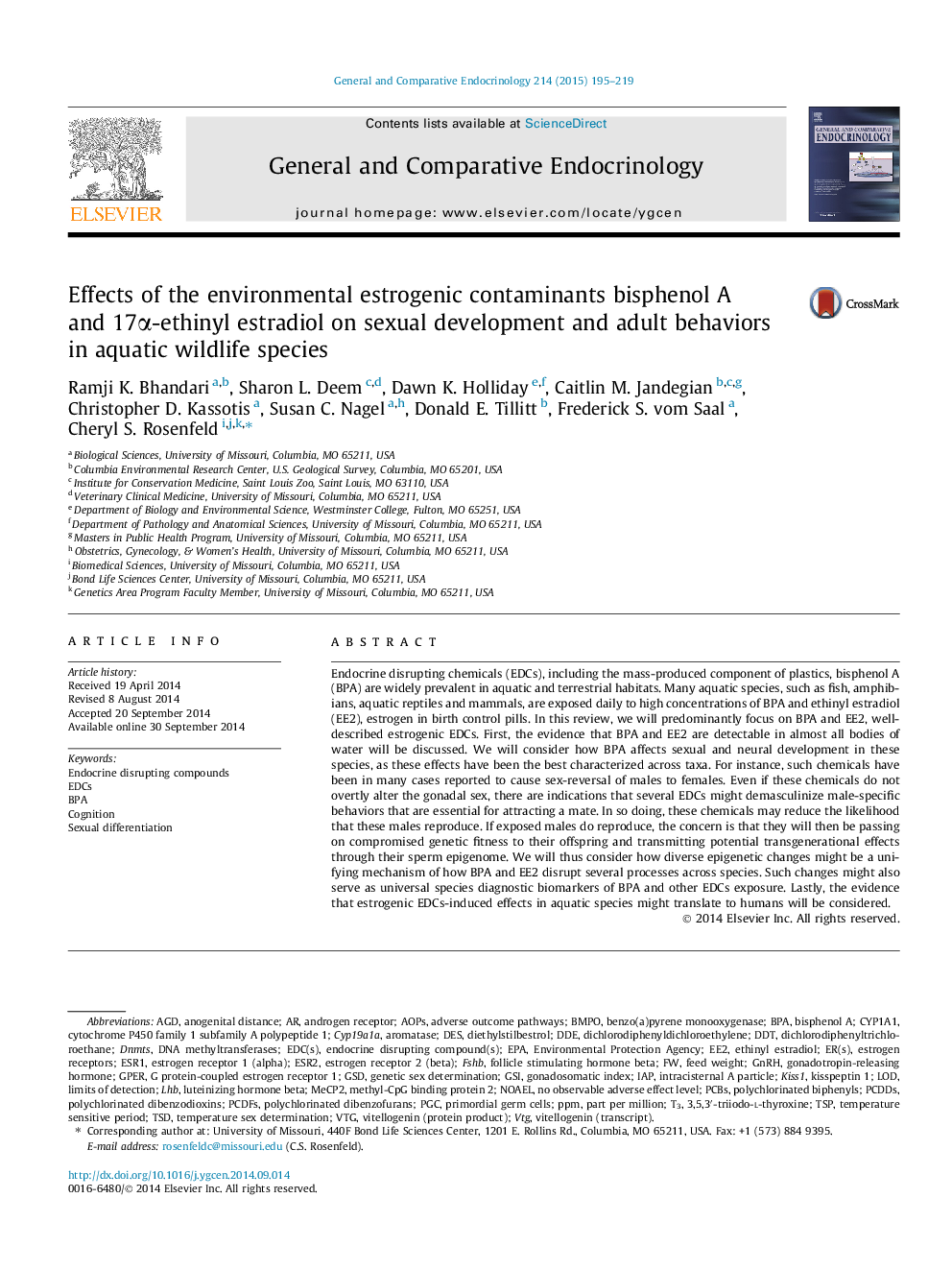| Article ID | Journal | Published Year | Pages | File Type |
|---|---|---|---|---|
| 2799992 | General and Comparative Endocrinology | 2015 | 25 Pages |
•Bisphenol A (BPA) and ethinyl estradiol (EE2) are detectable in various aquatic sources.•BPA and EE2 can disrupt sexual differentiation in various aquatic species.•BPA and EE2 can alter adult behaviors in various aquatic species.•Exposure to estrogenic EDCs may lead to epigenetic and transgenerational effects.•“One health, one medicine” concept applies to EDC exposure in animals and humans.
Endocrine disrupting chemicals (EDCs), including the mass-produced component of plastics, bisphenol A (BPA) are widely prevalent in aquatic and terrestrial habitats. Many aquatic species, such as fish, amphibians, aquatic reptiles and mammals, are exposed daily to high concentrations of BPA and ethinyl estradiol (EE2), estrogen in birth control pills. In this review, we will predominantly focus on BPA and EE2, well-described estrogenic EDCs. First, the evidence that BPA and EE2 are detectable in almost all bodies of water will be discussed. We will consider how BPA affects sexual and neural development in these species, as these effects have been the best characterized across taxa. For instance, such chemicals have been in many cases reported to cause sex-reversal of males to females. Even if these chemicals do not overtly alter the gonadal sex, there are indications that several EDCs might demasculinize male-specific behaviors that are essential for attracting a mate. In so doing, these chemicals may reduce the likelihood that these males reproduce. If exposed males do reproduce, the concern is that they will then be passing on compromised genetic fitness to their offspring and transmitting potential transgenerational effects through their sperm epigenome. We will thus consider how diverse epigenetic changes might be a unifying mechanism of how BPA and EE2 disrupt several processes across species. Such changes might also serve as universal species diagnostic biomarkers of BPA and other EDCs exposure. Lastly, the evidence that estrogenic EDCs-induced effects in aquatic species might translate to humans will be considered.
